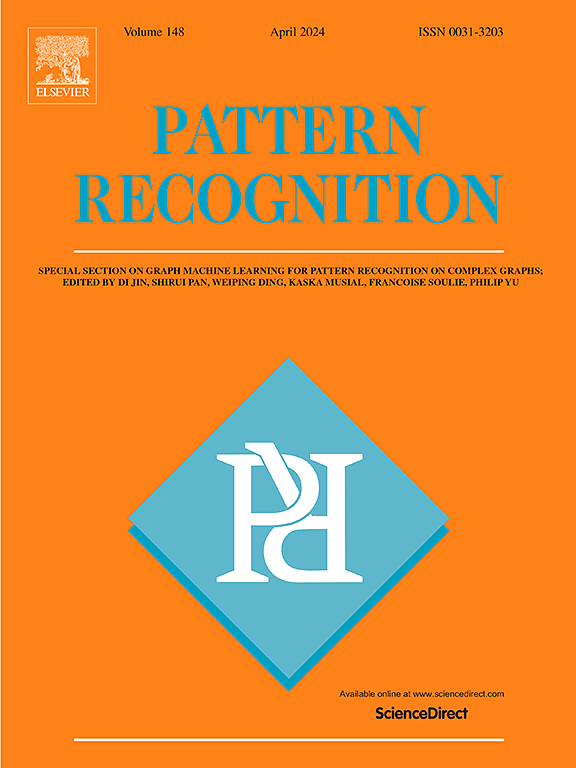HAN: An efficient hierarchical self-attention network for skeleton-based gesture recognition
IF 7.5
1区 计算机科学
Q1 COMPUTER SCIENCE, ARTIFICIAL INTELLIGENCE
引用次数: 0
Abstract
Previous methods for skeleton-based gesture recognition mostly arrange the skeleton sequence into a pseudo image or spatial–temporal graph and apply a deep Convolutional Neural Network (CNN) or Graph Convolutional Network (GCN) for feature extraction. Although achieving superior results, the computing efficiency still remains a serious issue. In this paper, we concentrate on designing an extremely lightweight model for skeleton-based gesture recognition using pure self-attention module. With dynamic attention weights, self-attention module is able to aggregate the features of the most informative joints using a shallow network. Considering the hierarchical structure of hand joints and inspired by the idea of divide-and-conquer, we propose an efficient hierarchical self-attention network (HAN) for skeleton-based gesture recognition. The hierarchical design can further reduce computation cost and allow the network to explicitly extract finger-level spatial temporal features, which further improves the performance of the model. Specifically, the joint self-attention module is used to capture spatial features of fingers, the finger self-attention module is designed to aggregate features of the whole hand. In terms of temporal features, the temporal self-attention module is utilized to capture the temporal dynamics of the fingers and the entire hand. Finally, these features are fused by the fusion self-attention module for gesture classification. Experiments show that our method achieves competitive results on three gesture recognition datasets with much lower computational complexity.
求助全文
约1分钟内获得全文
求助全文
来源期刊

Pattern Recognition
工程技术-工程:电子与电气
CiteScore
14.40
自引率
16.20%
发文量
683
审稿时长
5.6 months
期刊介绍:
The field of Pattern Recognition is both mature and rapidly evolving, playing a crucial role in various related fields such as computer vision, image processing, text analysis, and neural networks. It closely intersects with machine learning and is being applied in emerging areas like biometrics, bioinformatics, multimedia data analysis, and data science. The journal Pattern Recognition, established half a century ago during the early days of computer science, has since grown significantly in scope and influence.
 求助内容:
求助内容: 应助结果提醒方式:
应助结果提醒方式:


